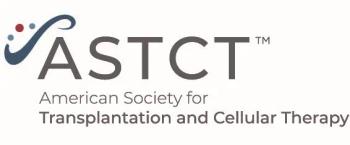
New Option to Prevent Graft-vs-Host Disease
Prophylaxis with tacrolimus/sirolimus provided equivalent graft-vs-host disease-free survival in patients undergoing matched, related donor hematopoietic cell transplantation.
Prophylaxis with tacrolimus/sirolimus provided equivalent graft-vs-host disease (GVHD)-free survival in patients undergoing matched, related donor hematopoietic cell transplantation compared with tacrolimus/methotrexate, according to results of a study published recently in Blood.
In addition, treatment with tacrolimus/sirolimus resulted in earlier engraftment and significantly less oropharyngeal mucositis after transplantation.
“As an alternative to tacrolimus and methotrexate, the tacrolimus and sirolimus regimen can be considered in patients undergoing TBI-based transplantation who are at higher risk for oropharyngeal mucositis (ie, intensive prior chemotherapy or prior head and neck radiotherapy), and in patients in whom timely engraftment is required (due to ongoing infection or risk of infection) after appropriate screening for risks of excessive hepatotoxicity are excluded,” wrote Corey Cutler, MD, MPH, of Dana-Farber Institute, and colleagues.
Cutler and colleagues conducted this phase III multicenter trial after preliminary studies suggested that sirolimus, an immunosuppressive mTOR inhibitor, decreased the incidence of acute GVHD and treatment-related toxicity after HLA-matched, related, and unrelated donor transplantation. These early studies also showed that sirolimus was associated with higher rates of endothelial injury syndromes.
In this study, they compared tacrolimus/sirolimus with tacrolimus/methotrexate in 304 patients aged 60 years or younger undergoing transplantation for acute leukemia in remission, myelodysplastic disorder, or chronic myeloid leukemia in chronic or accelerated phase. The primary endpoint was 114 day grade II-IV acute GVHD-free survival.
Day 114 grade II-IV GVHD-free survival was similar between the two treatment arms (67% vs 62%). Patients in the tacrolimus/sirolimus arm and the tacrolimus/methotrexate arms also had similar rates of grade II-IV GVHD (26% vs 34%) occurring 100 days from transplantation.
However, the researchers did find that those patients assigned to tacrolimus/sirolimus had a shorter median time to neutrophil engraftment compared with the methotrexate arm (14 vs 16 days; P < .001). In addition, the median time to platelet engraftment was 3 days shorter in the sirolimus arm (16 vs 19 days; P = .003). This more rapid engraftment did not result in a significant difference in hospitalization time.
Treatment with the tacrolimus/sirolimus regimen also resulted in less severe oropharyngeal mucositis. Patients treated with sirolimus had a lower peak and lower mean Oral Mucositis Assessment Scale score compared with patients treated with methotrexate. However, there was also a trend toward increased rates of endothelial injury syndromes, veno-occlusive disease, and thrombotic microangiopathy within 100 days of transplantation in patients treated with sirolimus compared with methotrexate.
No differences in chronic GVHD, relapse-free survival, or overall survival were seen between the two arms at 2 years.
In their discussion of the results, the researchers wrote that “the costs of sirolimus and its monitoring as well as the trend toward more endothelial injury syndromes may counterbalance” the advantages seen with sirolimus. However, they added that “with careful monitoring of sirolimus levels … the risk of these endothelial injury syndromes may be mitigated.”
Newsletter
Stay up to date on recent advances in the multidisciplinary approach to cancer.
















































































